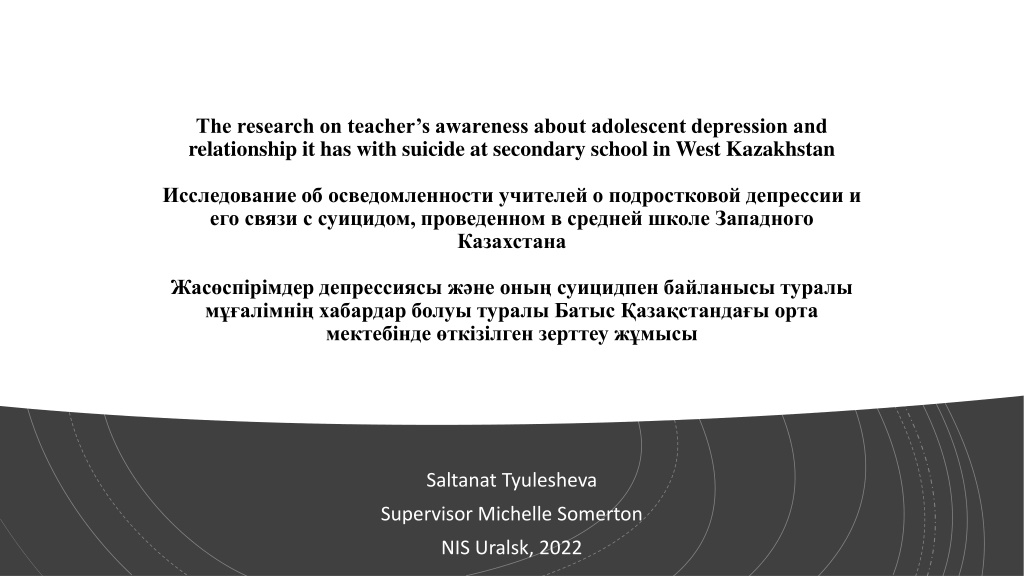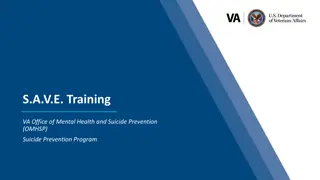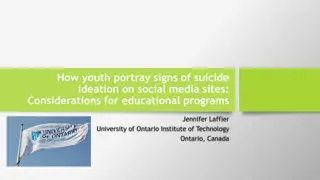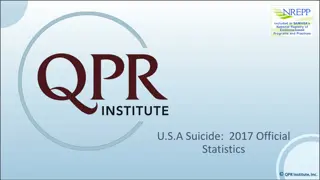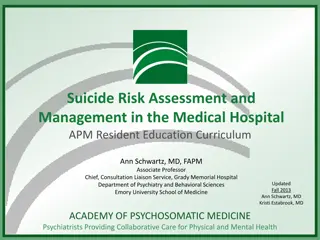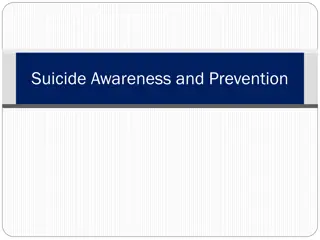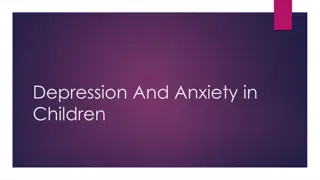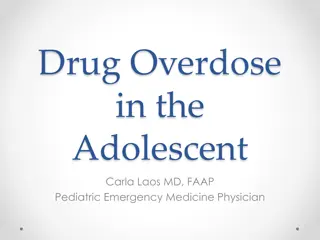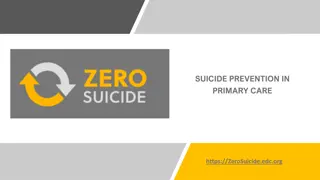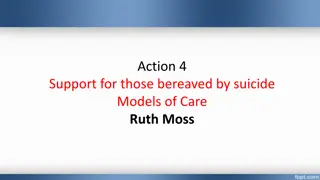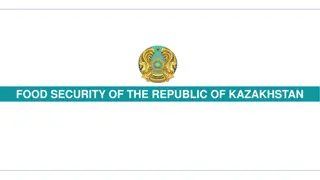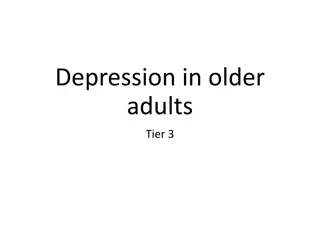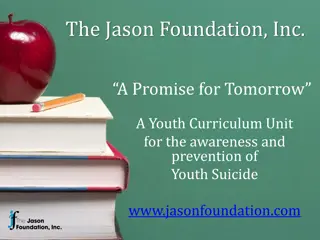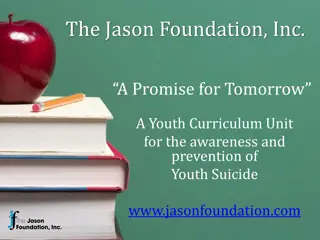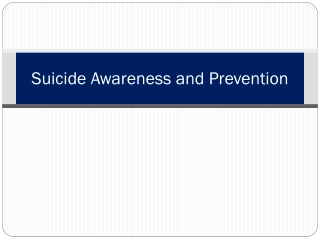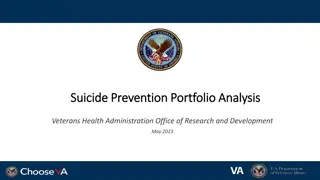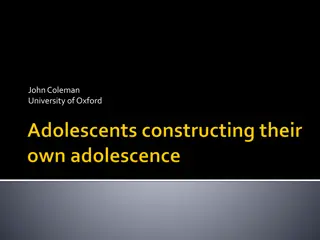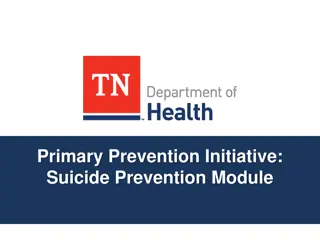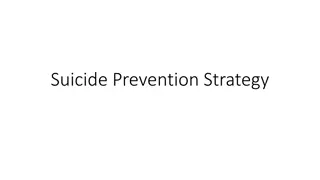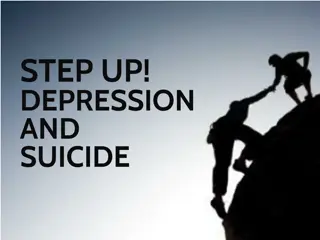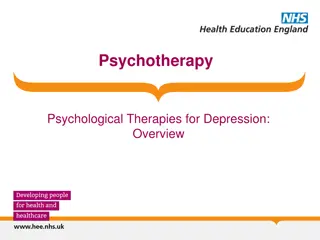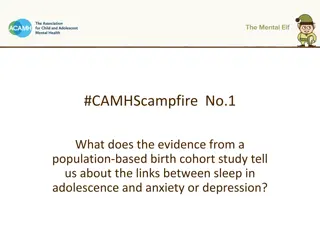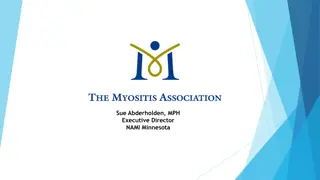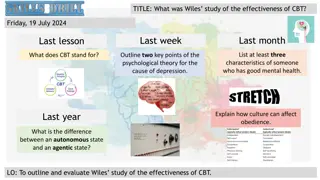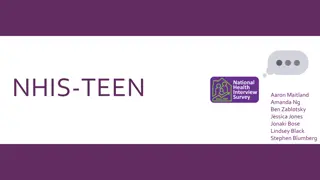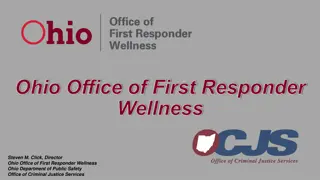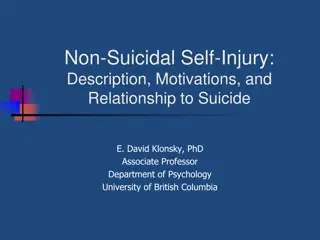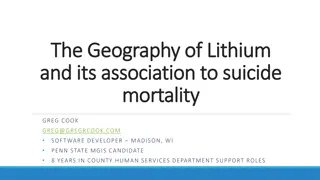Teachers Awareness of Adolescent Depression and Suicide: Research in West Kazakhstan
This research focuses on teachers' awareness of adolescent depression and its link to suicide in secondary schools in West Kazakhstan. It explores the existing problem, purpose of the study, signs and causes of depression, risk and protective factors from a teacher's perspective, methodology, results, and future implications. The study aims to enhance teachers' understanding of mental health issues among students to better identify at-risk individuals and implement necessary interventions.
Download Presentation

Please find below an Image/Link to download the presentation.
The content on the website is provided AS IS for your information and personal use only. It may not be sold, licensed, or shared on other websites without obtaining consent from the author. Download presentation by click this link. If you encounter any issues during the download, it is possible that the publisher has removed the file from their server.
E N D
Presentation Transcript
The research on teachers awareness about adolescent depression and relationship it has with suicide at secondary school in West Kazakhstan , Saltanat Tyulesheva Supervisor Michelle Somerton NIS Uralsk, 2022
The outline of the presentation 1. 2. 3. 4. 5. 6. 7. 8. 9. The explanation of the main terms and phenomena The existing problem and purpose of this research Signs and causes of depression at school setting Consequences of adolescent depression Possible risk and protective factors from teacher s side Methodology of the research The results of the research Discussion Future implications
The explanation of the main terms and phenomena Adolescence and Mental Well-being Adolescence and Depression Depression and Suicide Prevalence of Depression and Suicide among Kazakhstani Youth Theoretical Framework (Pic 1, Slide 3) Risk Factors: Interpersonal-psychological theory of suicide Protective Factors: Social Support Theory The Teacher s Role in Social Support
Theoretical framework of the research
The existing problem and purpose of this research Problem Statement Teachers are considered to be an important element of a child s mental health and they are in a position that exerts influence on a child s wellbeing. Therefore, it is important to understand their level of knowledge and understanding, particularly on risk and protective factors that relate to depression and youth suicide. Purpose of the Study The purpose of the study is to investigate teachers awareness about adolescent depression and the relationship it has with suicide. If teachers apply more focus on a child s emotional development as well as their academic achievement, those at risk students can be better identified, and interventions that create a more protective environment for the child put in place.
Signs and causes of depression at school setting Symptoms (according to Torres,2020) Sadness / grief / low mood Loss of appetite or weight Loss of interest/enjoyment in activities Lack of energy Low academic performance Sleeping problems Increased fatigue Aimless or slow physical movement or speech Isolation Inability to make decisions Guilt Loss of concentration suicide ideation that can last more than two weeks Causes parents high expectations (Ma et al., 2010) bullying and cyberbullying (Guo, Li, Wang, Ma, & Ma, 2020;) perfectionism (Lyndsay, Stephanie, & Michelle, 2017) teachers and peer victimization (Oriol, et al., 2017) self-esteem issues (Baumeister et al., 2003); school violence (Chen, & Wei, 2011); belonging to the sexual minority group GLB (McLaren, Schurmann, & Jenkins, 2015); negative life events (Stikkelbroek, Bodden, Kleinjan, Reijnders, & Baar, 2016;)
Consequences of adolescent depression Adolescent depression can lead to various negative outcomes like: - early pregnancy (Miller et al., 2008) - drug use (LaRusso et al., 2008; Bogard, 2005); - school refusal (Fremont, 2003); - suicide (Xu, Wang, & Shi, 2018). Further variables were related to the gender, level of depression, and environmental factors (Xu et al., 2018).
Possible Risk factors social and family risk factors (social disadvantage, parental separation or divorce, parental psychopathology, family history of suicidal behaviour, marital conflict, history of physical and/or sexual abuse during childhood, parent-child relationships), stressful life events and adverse life circumstances (institutionalization, school violence and bullying, rural and remote residence), individual and personality factors (personality traits, sexual orientation, genetic factors), mental health factors (affective mood disorders, substance use/abuse disorders, antisocial behaviours, anxiety disorders) (Haarr, 2012, p.10-18).
Possible protective factors Various findings about the impact of social parties Je-Yeon Yun, Halin Chung, Jin-Ah Sim, and Young Ho Yun (2019) conducted the research to find out the factors associated with depression among Korean adolescents in terms of individual healthy habits, feeling of security at school, and help-seeking activities in family or social community. They disclosed that parents and teachers regular conversations with adolescents about life experience, stress and challenges had been a protective factor, especially in cases of school refusal (Je-Yeon Yun et al., 2019).
Methodology Research design: a qualitative case study Methods: Sampling: a secondary school in West Kazakhstan Participants: 6 teachers (3 men and 3 women/ different subjects) Data collection: a semi-structured face-to-face interview Data analysis: a discourse analysis of the answers, following Silverman (2006) methodology Risks of the research: Ethical considerations: CITI training; respectfully; privately; confidentially
The results of the research Teachers knowledge about the characteristics of adolescent depression Teachers knowledge about the causes of adolescent depression within the school Teachers awareness about risk and protective factors Teacher s knowledge about the consequences of depression, its relation to suicide Teachers role in social support Teachers perspective for PD about mental health
Discussion The common patterns that emerged from the analysis can be classified into three major phenomena: teachers as diagnosticians teachers as stressors teachers as social supporters for a depressed adolescent.
Teachers as diagnosticians Generally, the data reveals that participants believe teachers can recognize the visual and verbal symptoms of depression among their students during the lessons. On the other hand, participants indicated that there were cases when it is not possible to foresee a student s mental disorder and prevent them from negative consequences due to concealed visual signs. Another important element in identifying students depression is the uniqueness of each case. Teachers have only negative association about depression which can be a stigma at some point as no one mentioned the possibility of positive outcomes of depressive symptoms.
Teachers as stressors Being the stressor for students is a risk factor that can exacerbate depressed learner s state of mental health and lead to regrettable consequences. The data reveals that the participants understood that there are risk factors such as parent s high expectations, teacher s pressure, peer s victimization, rejection, bullying, lack of personal qualities, skills, and knowledge about their own psychological state. Furthermore, teachers low readiness, incompetent approach, aggressive attitude, negative remarks, or incorrect advice can lead the students in the wrong direction. This is why teachers it should be necessary for teachers to go through special courses about students mental health in order to be prepared to provide relevant approach,and take appropriate steps to mitigate negative consequences. This will in turn contribute into teachers confidence to provide social support and meet students psychological needs.
Teachers as social supporters the participants believed that it is important to pay attention to the students psychological health as it affects the students academic performance, their results, and participation in the classroom (Rosenfeld et al., 2000). teachers support does not buffer particularly students depressive symptoms (Fredrick et al., 2018). Interestingly, participants believe that teachers can be the source of social support for those students who cannot communicate openly with their parents or peers. In terms of types of social support, the participants showed more knowledge in informational, instructional, and appraisal types of support rather than emotional or material. Although, according to Camara et al., (2017) adolescents prefer emotional support much more.
Teachers perspective for enhancing professional skills in recognizing depression Generally, the participants knew what depression is, could describe its symptoms, can predict the causes, risk factors, and negative consequences. However, they always expressed the words and phrases of hesitation about their knowledge, which indicates that they might lack confidence about their knowledge on depression and its treatment. They believed that the final stage of depression can be suicide. However, the participants did admit that they lack knowledge about adolescent depression and can only guess from their observations and experience what it is, what to do, and how to treat it. As the result, teachers training about students mental health is crucial for establishing every child s psychological wellbeing and avoiding negative outcomes.
Future implications The results indicate the importance of understanding the needs of adolescents with and without depression, and educators professional readiness to provide appropriate support. Specifically, teachers knowledge about adolescent depression and its relationship with suicide and other self-harming consequences is crucial for raising teachers involvement in school interventions aimed at establishing sustainable wellness. These findings highlight the need for professional development programs as well as the inclusion of content in pre-service teaching education programs that focus on the psychological well- being of students.
